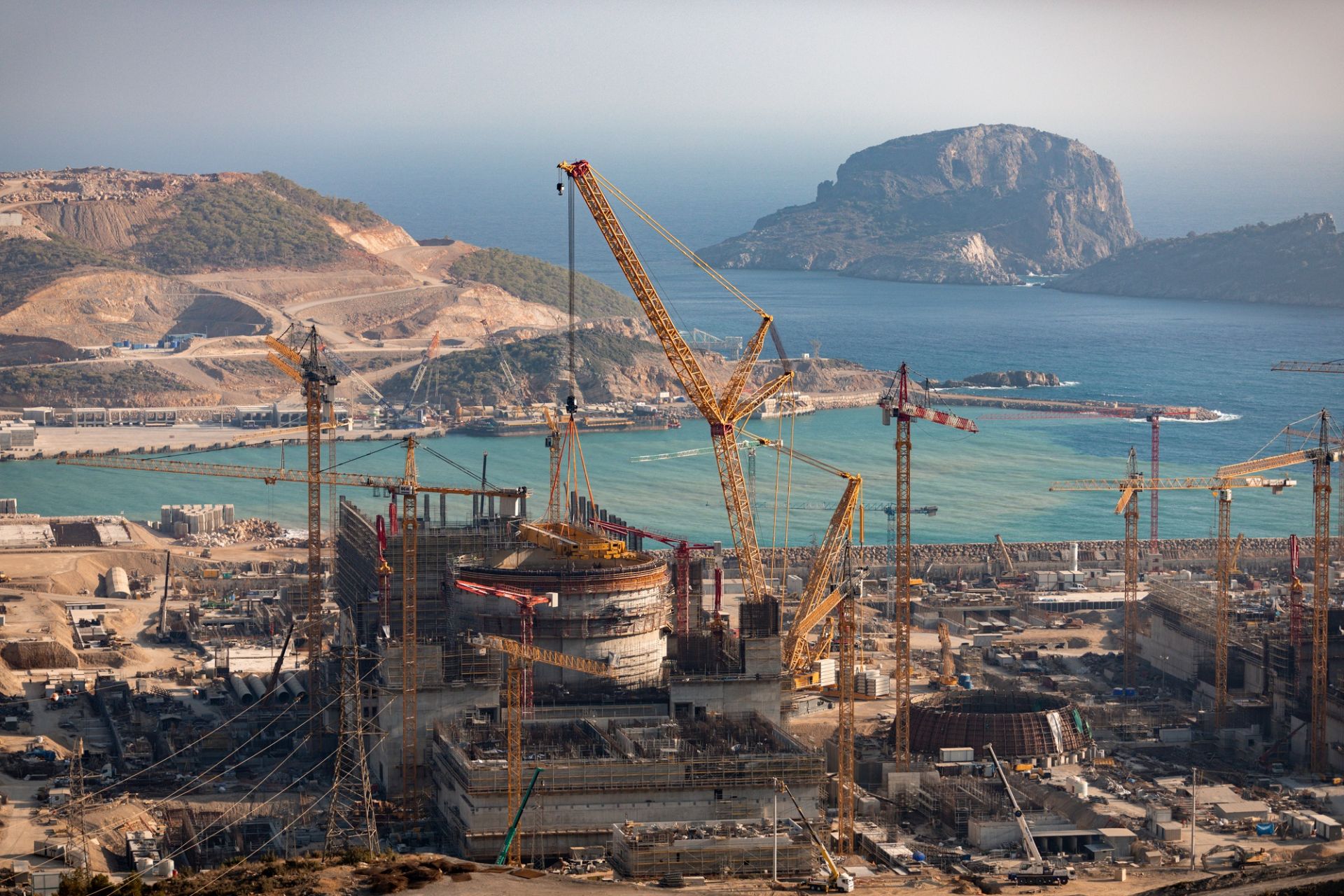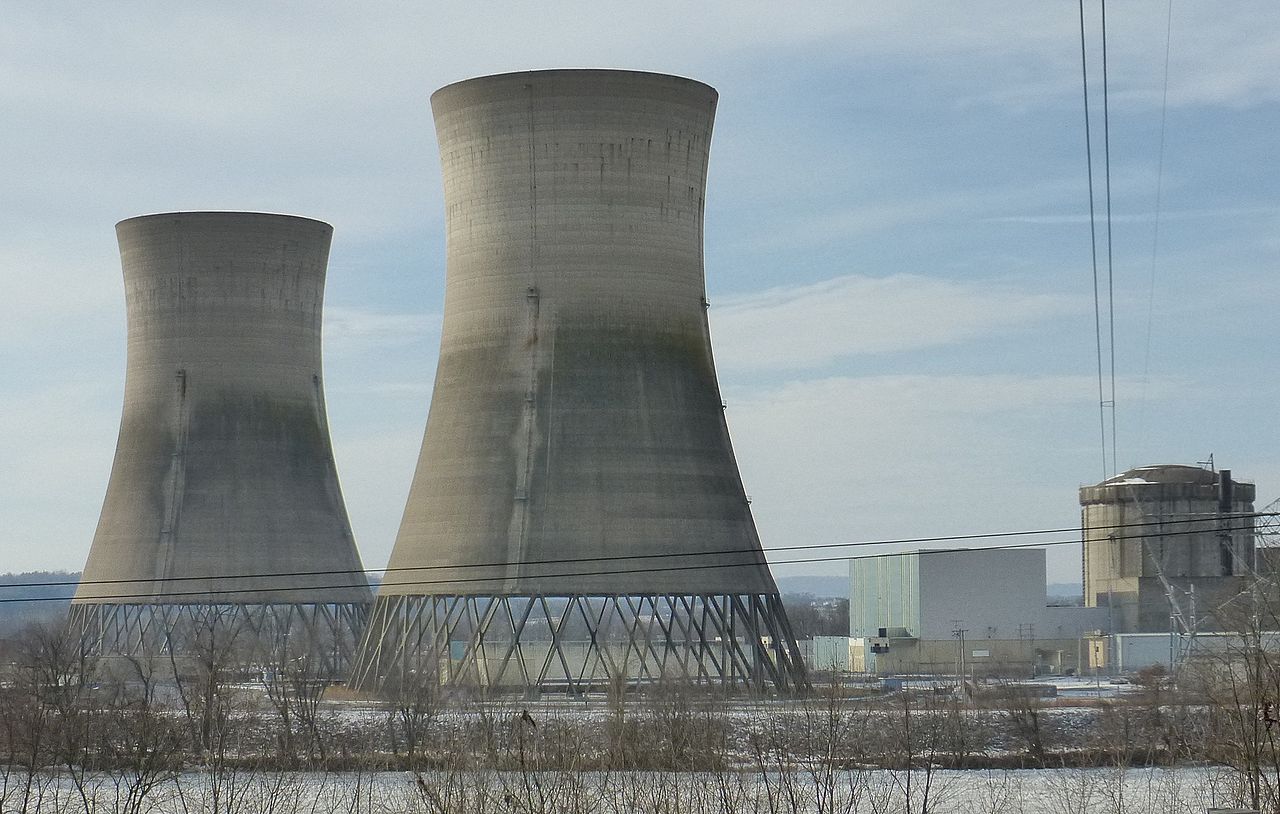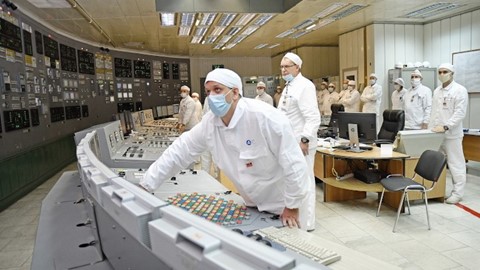Turkey’s Akkuyu-1 receives its polar crane. (Photo: Akkuyu Nuclear)
Akkuyu Nuclear, the Ankara-based Rosatom subsidiary established to manage Turkey’s Akkuyu nuclear plant project, has announced the successful mounting of the Unit 1 polar crane. The operation was carried out using a Liebherr LR 13000 crane and took approximately four hours, according to Akkuyu Nuclear.
Also referred to as a circular bridge crane, the polar crane operates on a circular runway located near the spring line of the containment building. It is used for a wide range of loading and lifting tasks within containment, including reactor-head removal/replacement and fuel loading/unloading.
The cooling towers of Unit 2 at Three Mile Island Nuclear Generating Station, closed since the accident in 1979.
The Three Mile Island accident in 1979 was the most-studied nuclear reactor event in the U.S. There is a plethora of research about the accident available to the general public, including the president-appointed Kemeny Commission report and the Nuclear Regulatory Commission’s Rogovin inquiry report (split into volume one, and volume two, parts one, two, and three), which are the two detailed government-sponsored investigations into the accident. There are also thousands of documents in the NRC’s ADAMS database available to the public, an excellent overview by NRC historian Samuel Walker Three Mile Island: A Nuclear Crisis in Historical Perspective, as well as the Nuclear News special report from April 1979, and articles written by ANS members like William Burchill about the accident and the many changes it forced on the industry. If the producers of Meltdown: Three Mile Island—available on Netflix—had read any of those documents instead of relying mostly on input from antinuclear activists, their “documentary” might have been presented with at least some sense of balance and credibility.
Instead, similar to a recent Science Channel documentary on the Three Mile Island accident, Meltdown focuses on drama instead of science. This four-part miniseries does not attempt to provide a balanced set of facts from the technical community and instead relies heavily on nonexpert opinions and anecdotal statements to tell a story that easily falls apart under even the faintest scrutiny.
Nuclear News reached out to multiple ANS members who were involved with either the accident response or the clean up to help provide a critical look at some of the more egregious statements made in the documentary.
Reactor operators in the control room at Kursk I-1, as the unit is powered down for good. (Photo: Rosenergoatom)
After 45 years of producing electricity, the first unit at Russia’s Kursk nuclear power plant has been retired, plant operator Rosenergoatom announced on Monday. Kursk I-1, one of the facility’s four 925-MWe light water–cooled graphite-moderated reactors, model RBMK-1000 (a Chernobyl-type reactor), was permanently shut down at 00:24 Moscow time on December 19.




